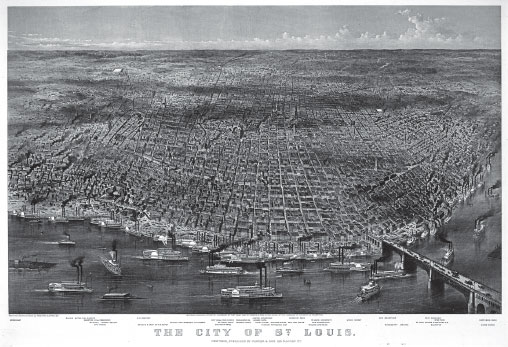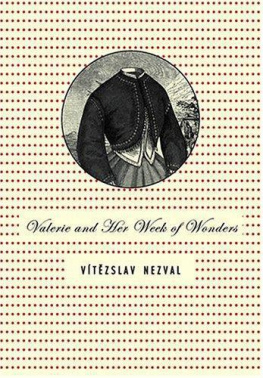Valerie Battle Kienzle - Lost St. Louis
Here you can read online Valerie Battle Kienzle - Lost St. Louis full text of the book (entire story) in english for free. Download pdf and epub, get meaning, cover and reviews about this ebook. year: 2017, publisher: Arcadia Publishing Inc., genre: Non-fiction. Description of the work, (preface) as well as reviews are available. Best literature library LitArk.com created for fans of good reading and offers a wide selection of genres:
Romance novel
Science fiction
Adventure
Detective
Science
History
Home and family
Prose
Art
Politics
Computer
Non-fiction
Religion
Business
Children
Humor
Choose a favorite category and find really read worthwhile books. Enjoy immersion in the world of imagination, feel the emotions of the characters or learn something new for yourself, make an fascinating discovery.
- Book:Lost St. Louis
- Author:
- Publisher:Arcadia Publishing Inc.
- Genre:
- Year:2017
- Rating:3 / 5
- Favourites:Add to favourites
- Your mark:
- 60
- 1
- 2
- 3
- 4
- 5
Lost St. Louis: summary, description and annotation
We offer to read an annotation, description, summary or preface (depends on what the author of the book "Lost St. Louis" wrote himself). If you haven't found the necessary information about the book — write in the comments, we will try to find it.
Lost St. Louis — read online for free the complete book (whole text) full work
Below is the text of the book, divided by pages. System saving the place of the last page read, allows you to conveniently read the book "Lost St. Louis" online for free, without having to search again every time where you left off. Put a bookmark, and you can go to the page where you finished reading at any time.
Font size:
Interval:
Bookmark:



Published by The History Press
Charleston, SC
www.historypress.net
Copyright 2017 by Valerie Battle Kienzle
All rights reserved
Front cover: Dozens of steamboats once moored along the Mississippi River wharf at St. Louis. Prior to the arrival of railroads, the river was the major transportation route into and out of St. Louis. Library of Congress.
First published 2017
e-book edition 2017
ISBN 978.1.43966.373.8
Library of Congress Control Number: 2017948490
print edition ISBN 978.1.62585.924.2
Notice: The information in this book is true and complete to the best of our knowledge. It is offered without guarantee on the part of the author or The History Press. The author and The History Press disclaim all liability in connection with the use of this book.
All rights reserved. No part of this book may be reproduced or transmitted in any form whatsoever without prior written permission from the publisher except in the case of brief quotations embodied in critical articles and reviews.
Dedicated to the memory of the artisans and laborers who built parts of St. Louis that are forever lost. Dedicated to the memory of the Kienzle, Boedeker and Sanderson familiesgood Germans with a strong work ethic who loved their adopted home, St. Louis, Missouri, U.S.A.
CONTENTS
INTRODUCTION
It is self-evident that St. Louis affected me more deeply than any other environment has ever done. I feel that there is something to having passed ones childhood beside the big river, which is incommunicable to those people who have not. I consider myself fortunate to have been born here, rather than in Boston, or New York, or London.
T.S. Eliot, born in St. Louis, September 26, 1888
Several common themes can be found in a comprehensive history of St. Louis, Missouri: tear down, rebuild and keep moving. Destroy the old to make way for the new and improved. A look at Camille N. Dry and Richard J. Comptons Pictorial St. Louis, the Great Metropolis of the Mississippi Valley: A Topographical Survey Drawn in Perspective, A.D. 1875 and current Google maps of the same areas show the difference between St. Louis then and St. Louis now. A comparison of the same views reveals how many buildings and residences that once existed no longer do.
St. Louis as it is known today began in February 1764. A small group of Frenchmen from New Orleans with a land grant from the king of France wanted to establish a fur-trading post on the western banks of the Mississippi River a few miles from its confluence with the Missouri River. The location was near the grounds of todays Gateway Arch, but the topography the first French settlers saw looked nothing like it does today. Pierre Laclede, Auguste Chouteau and others claimed the bluff-filled land and named it for French King Louis IX. But they were by no means the first to inhabit the area.

St. Louis founders developed a simple street grid soon after the village was settled. It was not long before the city grew north, south and west from there. Library of Congress.
Prior to their arrival, the land along the mighty Mississippi was home to ancient peoples. Evidence of previous civilizations existed in the form of dozens of huge earthen structures thought to be a type of ceremonial mound. Their existence led 1800s riverboat captains to nickname the area Mound City. There existed in the mid-1800s two schools of thought regarding the mounds. Some thought the mounds were remnants of a long-ago civilization. However, since no evidence of streets or structures remained, there was no reason to preserve the mounds and their contents. Others thought the mounds had formed as natural deposits driven by wind and rain over a long period of time. Some wanted to preserve the mounds and build around them; others favored leveling them in the name of progress. In the end, progress won.
As the city grew and expanded, all but one of the mounds were destroyed. Residences and commercial structures were built. Earth was removed and relocated with little regard to the mounds original purpose or contents. Thus a new city, St. Louis, was born and came to life in the middle of the United States, near the confluence of three major waterways, the Mississippi, the Missouri and the Illinois Rivers.

This serene depiction of St. Louis in 1859 is somewhat deceiving. In reality, the mighty Mississippi River bordering the eastern edge of the city is never blue and serene, but brown with a swift current. Library of Congress.
At varying times, both France and Spain claimed possession of the land that includes todays St. Louis. Then, in 1803, President Thomas Jefferson negotiated an amazing deal. The United States bought this and more than 530 million acres of land from France in what was called the Louisiana Purchase. The cost: $15 million, or about $0.03 an acre.
Interest in the riverfront village increased following Meriwether Lewis and William Clarks two-year exploration of the Louisiana Purchase territory. Famed explorer Zebulon Pike (Pikes Peak was named for him) was commissioned by the government to explore the Mississippi River in search of its origin. His expeditions in 1805 and 1806 began in St. Louis. The citys location made it a natural crossroads for commerce and growth potential. The tiny fur-trading village was about to grow.
John Fletcher Darby was born in North Carolina in 1803 and moved to St. Louis with his family when he was fifteen. As an adult, he became an influential businessman and statesman. He was elected mayor of St. Louis in 1835 and was subsequently reelected several times. He was an early supporter of building a railroad. In his 1880 book Personal Reflections of John F. Darby, he recalls the St. Louis he knew soon after his family moved here:
But the inhabitants were, beyond doubt, the most happy and contented people that ever lived. They believed in enjoying life. There was a fiddle in every house, and a dance somewhere every night. They were honest, hospitable, confiding, and generous. No man locked his door at night, and the inhabitant slept in security, and soundly, giving himself no concern for the safety of the horse in his stable or of the household good and effects in his habitation.
St. Louis was incorporated as a city in 1823. Northsouth and eastwest streets were marked. Homes and businesses were established, and common grounds were set aside for farming and pastures. At that time, when tall bluffs overlooked the Mississippi River, no wharf existed alongside the river. Only two landings opened from the forty-foot limestone bluffs to the river, one at the foot of what became Market Street and one at the foot of Oak Street, later called Morgan Street. St. Louis remained a rugged frontier town.
In 1836, author Washington Irving published Astoria: Or, Enterprise Beyond the Rocky Mountains. John Jacob Astor, businessman and owner of the American Fur Company, had commissioned Irving to accompany and chronicle his companys 181012 expedition to Oregon. The book became a best seller. Irving described St. Louis of the 1810s in chapter 14:
Next pageFont size:
Interval:
Bookmark:
Similar books «Lost St. Louis»
Look at similar books to Lost St. Louis. We have selected literature similar in name and meaning in the hope of providing readers with more options to find new, interesting, not yet read works.
Discussion, reviews of the book Lost St. Louis and just readers' own opinions. Leave your comments, write what you think about the work, its meaning or the main characters. Specify what exactly you liked and what you didn't like, and why you think so.



